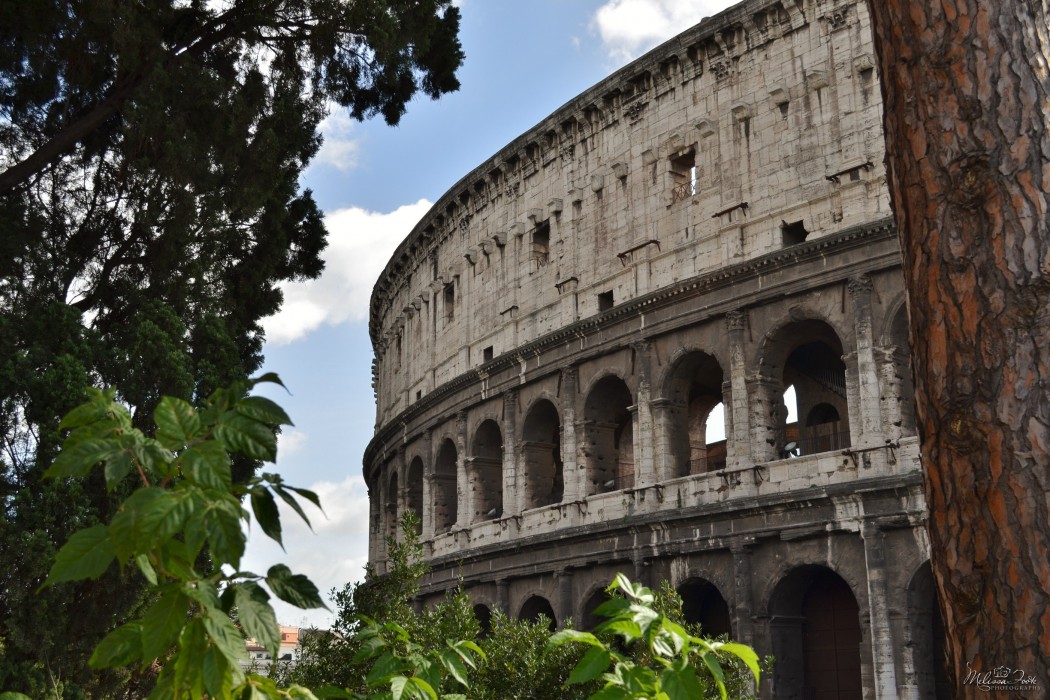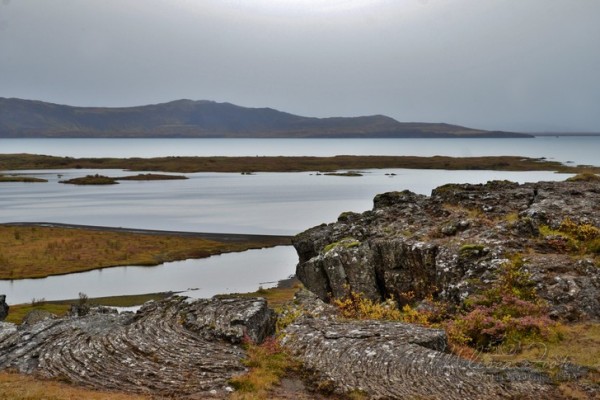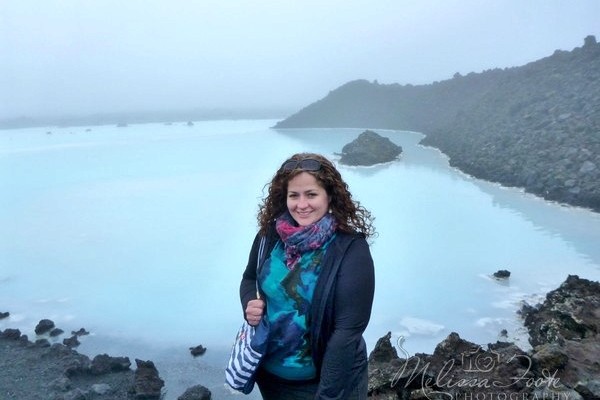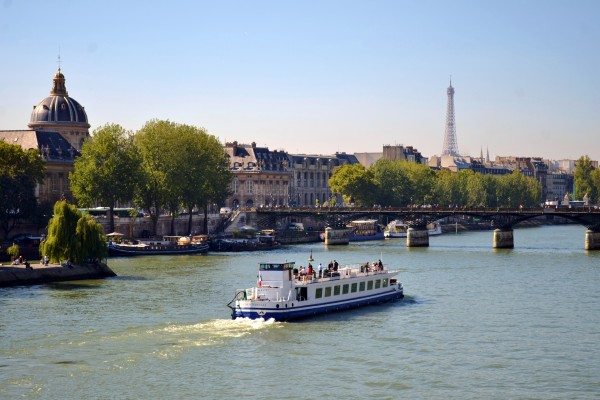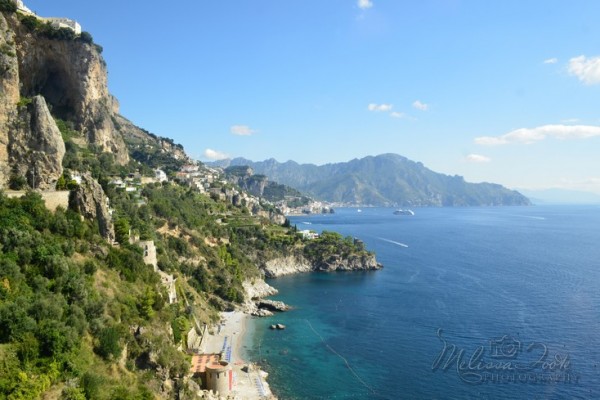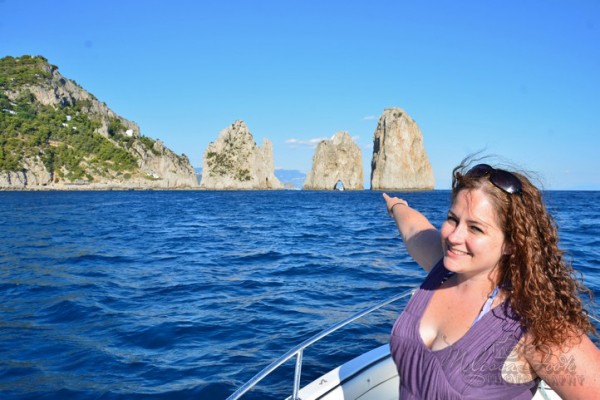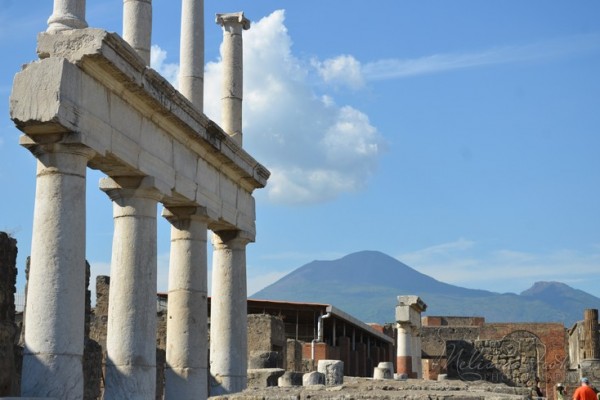SEPTEMBER 19, 2013
The Vatican & The Colosseum by Night
Rome is big. Not only that, Rome is also crowded. There’s no real “low” season in Rome, there are tourists visiting the Italian capital all year long. Prices tend to drop and queues aren’t as long in the winter, late fall, and early spring, but even then you aren’t likely to have the Vatican Museum to yourself.
Vatican City
Italy has more UNESCO sites listed than any other country, but that’s not the only impressive Italian status. The whole of Vatican City is on UNESCO’s World Heritage Sites list, and it’s the only listing that is an entire country.
No trip to Rome is complete without visiting the Vatican Museums. The site is actually a collection of museums, all inter-connected. The collection at the Vatican Museums were begun by Pope Julius II in the early 1500′s. The Museums include the Gregorian Egyptian Museum, Gregorian Etruscan Museum, Classical Antiquities (Greek and Roman), Pio Christian Museum, Pinacoteca Wing, and the Missionary-Ethnological Museum and then there’s the Palace! As you can see, it can be a full day! Visiting the Vatican is an incredible experience… but if you’re not prepared it can be overwhelming, exhausting, and even frustrating. We highly recommend doing research before attempting to visit the museums. I’ve read there are seven miles of corridors in the Palaces. No wonder people get worn out! But if you do not take a guide, at least have a podcast, a few good books, and a lot of time. This is one of the few places we splurged on a guided tour, without it we surely would have gotten lost and overwhelmed. It also secured us a Skip the Line pass that is very helpful since the lines here can sometimes take hours if you do not book your time in advance!


Hurry up and Wait. Our tour was booked for 9 am ( booked directly though the Vatican Museum website ). We booked a 4 hour tour of the Vatican Museums (including the Sistine Chapel) and St. Peter’s Basilica. Even though the entrance was only steps away from our guesthouse it was recommended to show up early. We were surprised to already see a line formed for the guided tours. Basically the ‘Skip-the-Line” had a line, but at least it was significantly shorter than the line for those who wanted to purchase tickets at the door! Once we made it inside, we got into another line for security, then had to wait around in the giftshop because we were ‘too early’ to register for our tour. This gave me an opportunity to pick up souvenirs for family and review the maps of the museum.
Guide Envy. We were finally matched up with the rest of our group and our guide. Our guide definitely knew her art history inside and out. However she did lack in public speaking skills. Even with headsets we had a difficult time following her. Her monotone-unenthusiastic voice was no competition over the noise of the massive crowds. We quickly developed, what we like to call, ‘Guide Envy’ . Every time another group passed by us we found ourselves longing to find a way to jumpship and join their tour. We were amazed how passionate the other guides were about the stories and controversies over the pieces around us. I would often try to stand near the other groups to ease-drop on what the other guides had to say! Our guide had wonderful knowledge about the art facts and the dates.. but it was a bit dry in comparison to the stories we could hear from the other groups! I would recommend researching the guides individually. Find one that matches your style.
Dressing appropriately is strictly enforced. Some tourists were turned away from entering because they had their shoulders exposed or were wearing shorts. We saw people walking through this most dignified cathedral wearing disposable paper clothing over their shorts and tank-tops after being forced to buy the paper coveralls from a nearby vendor at a ridiculous price. Don’t get caught in this situation…. Cover up!
Many parts of the Vatican Museums do not have air-conditioning. In some rooms, it can get quite stuffy. Newer wings, like the Pinacoteca, have small, portable AC units. But be prepared if you go in the summer as it can quite HOT. Even in September some of the rooms were unbearably warm with shoulder to shoulder crowds. I was sure happy I remembered to pack my little Chinatown paper fan!
No pictures, No photo! You’ll hear this mantra over and over by the security staff in the Sistine Chapel. Why can’t you take pictures in the Sistine Chapel? In the past, the copyright for the images was owned by Nippon TV, a Japanese channel best known for its quiz shows and baseball coverage. They underwrote the cleaning and restoration of Michelangelo’s Sistine Chapel frescoes in return for exclusive media rights to the restored ceiling. The restoration work took almost 15 years for these masterpieces, at a cost of $3-4 million.
St. Peter’s Basilica. St. Peter’s Basilica is the largest church in the world, at 730 feet long and 500 feet wide and covering more than 5 acres, and capable of holding more than 60,000 people. Markings on the floor of St. Peter’s Basilica indicate the size of the 15 largest churches in the world – in other words, they would each fit inside St. Peter’s. Designed principally by Donato Bramante, Michelangelo, Carlo Maderno and Gian Lorenzo Bernini, St. Peter’s is the most renowned work of Renaissance architecture and remains one of the largest churches in the world. The dome of St. Peter’s rises to a total height of 448.1 ft from the floor of the basilica to the top of the external cross. It is the tallest dome in the world. Its internal diameter is 136.1 ft, slightly smaller than two of the three other huge domes that preceded it. Although the entrance to the Basilica is free we opted to extend our Guided Museum Tour for a guided Basilica tour as well. This combo tour allowed us to take a guided shortcut and go directly into the Basilica versus having to walk around the city walls and reenter after waiting hours in a LONG security line.

Rome By Day
Although we had a busy morning exploring the Vatican, we still wanted to make most of the day, so we had a quick bite to eat and headed straight back to sightseeing Rome.
The Colosseum
The Colosseum is one of the few historic sights that is conveniently beside a metro stop. We exited the metro and was in Awhh by the most famous monument in Rome towering in front of us. Most people stopped in their tracks and started to take photos, but we knew better. I read about taking the escalators up to a public square above the metro station. The blogger raved about it’s postcard view. And boy they were right! We found a little square, tucked away from the huge tourist crowds, that boasted a beautiful view and the perfect spot for photos! Even with construction and scaffolding we were able to capture postcard shots for our collection!
Interesting Fact… What we see nowadays is just the skeleton of what was the greatest arena in the ancient world. Three-fifths of the outer surrounding brick wall are missing. In the Middle Ages, when no longer in use, the Colosseum was transformed into an enormous marble, lead and iron quarry used by Popes to build Barberini Palace, Piazza Venezia and even St. Peter’s.
Roman Forum
We made our way down a street that ran along the outside of the Roman Forum. A great alternative to paying and walking through the ruins is to walk along the outside of the Forum. We decided not to enter the ruins directly due to the temperature of the midday sun and from research stating that many of the ruins are not very well labeled. It’s recommended to hire a guide to get a full understanding and picture of what the rubble once was. Just from walking around the outside we got to see a lot of the layout and the ruins of what was once, for centuries, the site of the city’s most important public buildings.
Vittorio Emanuele II Monument & Rome from the Sky Elevator
Love it or Hate it?! A controversial monument built in honor of Victor Emmanuel, the first king of a unified Italy. Universally known as “The Wedding Cake” or “The Giant Typewriter”. Many Italians actually find this monument as pompous and too large. The monument was controversial since its construction destroyed a large area of the Capitoline Hill with a Medieval neighborhood for its sake.
Going Up. On the back of the Monument is a glass-walled elevator to the top, called “Rome from the Sky” Quadrighe Terrace. Up there, you get a 360-degree view over the heart of Rome.
How to Get There: Go up the steps. elevator is located near the cafe around the back of the monument, adjacent Church of Santa Maria in Aracoeli. Use the stairs at the Piazza del Campidoglio or at the Piazza Ara Coeli for the easiest access. Good to Know: Also note that the telescopes atop the monument are free to use. There are also helpful pamphlets which explain what you’re looking at.
Piazza del Campidoglio /Capitoline Hill
The Capitoline Hill, between the Forum and the Campus Martius, is one of the seven hills of Rome. It was the citadel of the earliest Romans.Part of this ancient historical city was destroyed to make room for the controversial Vittorio Emanuele II Monument that we were just visiting. The foundation of the monument still contains visible ancient ruins. It’s hard to know exactly what you are looking at since there are just so many ruins scattered along the city roads. I tried to identify many on my Rome Map.
Piazza del Campidoglio, a perfect location to gaze down at the Roman Forum. Located just off to the side of the Vittorio Emanuele II Monument. Michelangelo Buonarroti designed the square( that is a top the Capitoline Hill) with a good number of very short and large steps so a horse could go up with ease. Replica of Marcus Aurelius’ statue can be found in the middle of the square. If you walk past it (to either the left or right), you will get a great view of the Forum well worth the the trouble of climbing all those steps.
Italian Drama. We wandered the streets some more and found ourselves on Via San Giovanni in Laterano, a street leading to the east flank of the Colosseum. It’s a vibrant 300-metre shopping and bar area designated as the gay- and lesbian-friendly neighborhood in the center of Rome. We found a great little restaurant and enjoyed another delicious pasta dinner out on the sidewalk patio. We got more than we expected from our normal rest, dinner & people watch evening. We witnessed a little drama as a man from the street started to pester the diners (mostly tourists). The man appeared to be well known to the owner as there was some seriously intense exchange of words and gestures. Oh it would have been lovely to know Italian. The man continued to linger and the owner went inside and returned with the chef waving a butchers knife. A quick chase down the street and some more shouting… and it was back to more lovely and quite dinning. Ok, perhaps it was more than a little drama but everyone seemed calm and relaxed afterwards.
Colosseum by Night
One of the few fun things we booked in advance was our guided tour of the Colosseum at night. We were enticed by the unique opportunity to be one in a handful of people allowed into the Colosseum after hours under the moonlit sky. A big advantage is small group size of only 25 people compared to thousands of people in daytime. Having a guided night tour was a perfect way to truly appreciate the shady history of the spectacular arena. Our tour covered the arena floor, the underground dungeons and the upper tiers. The many shadows, eerie silence, and gruesome history made for unforgettable and unsettling visit. We highly recommend looking into this tour if in Rome!
Trevi Fountain
Our long day ended with a last minute detour to the famous Trevi Fountain. It marks the end of an aqueduct constructed in 19 BC to bring water to Rome from around 20kms away. Of course a visit is not complete without throwing a coin over your shoulder to ensure that you will return again!
Check Out Our Map of Rome
ROME MAP

